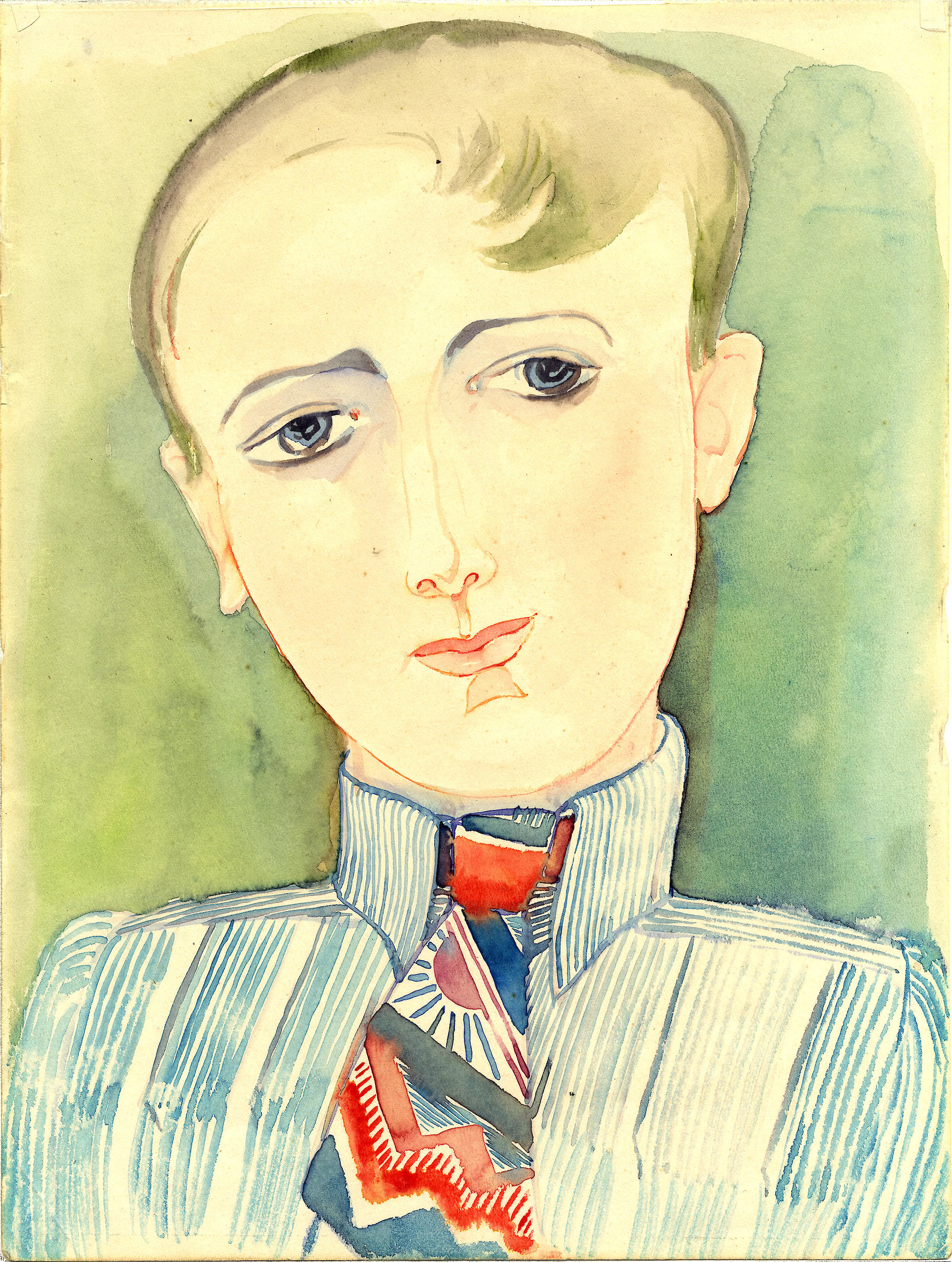

Self Portrait Ida Sofia Maly, 1928–1930
Between the Gender Roles
In the interwar period, traditional images of women were broken up, not least in art. Ida Maly, who lived an unconventional and emancipated life as an artist, depicted herself as a garçonne, a woman of boyish appearance, in her self-portrait. The breaking with stereotyped roles defined by society and the suspension of typically female and male gender identity were characteristic features of her works.
Watercolour on paper
21,2 × 28,4 cm
Graz Museum
The Artist Ida Maly
Educated in Graz and Vienna, Ida Maly (1894 – 1941) was a modern woman living by the values of emancipation and equality among Bohemian artists’ circles in Munich as from 1918. After spending time in Berlin and Paris, she returned to Graz in 1928 and was one of the few artists to experiment with abstraction in Graz. Due to mental problems she was admitted to Graz’s psychiatric hospital, the “Feldhof”, as it was called at the time. There she created surreal works that have often been classified as “zustandsgebundene Kunst” in the German-speaking world [i.e. art bound to certain clinical states of mind/ insanity]. In 1941, Ida Maly was taken to the extermination centre Hartheim Castle in Upper Austria and murdered in the framework of the “Euthanasia Programme”. Long forgotten as an artist, she has been recognised as an important representative of modern art in Austria since the late 1990s.

